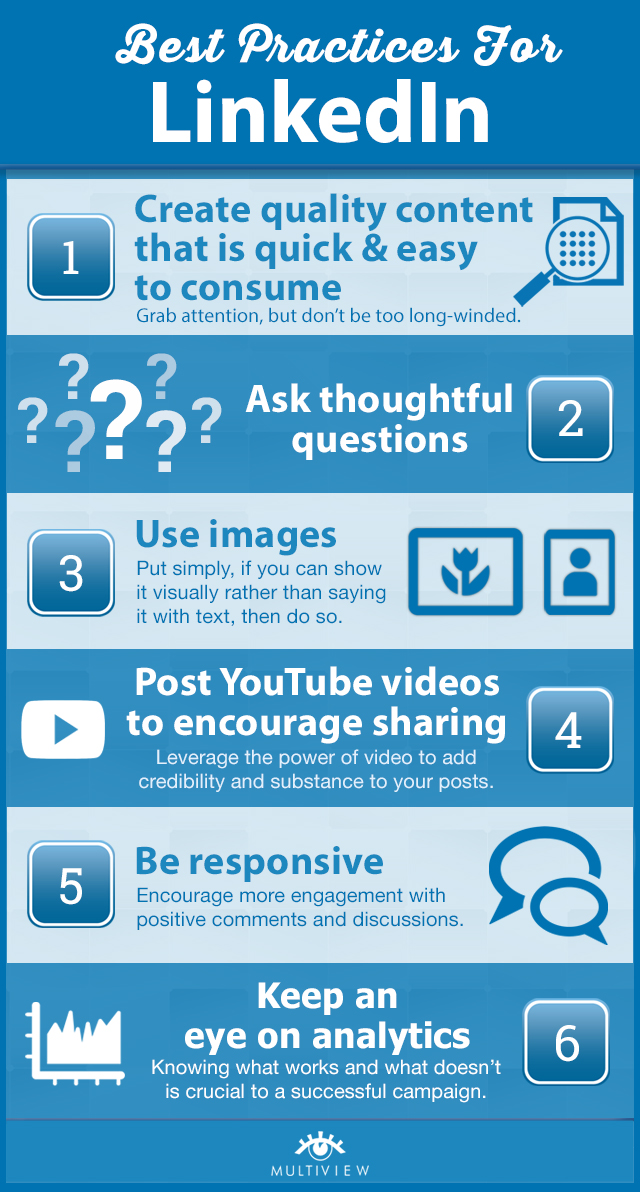In today's competitive job market, companies are always looking for the best talent to join their teams. One method they use is reposting job listings on platforms like LinkedIn. But have you ever wondered why this happens? Reposting can be a strategic move, and understanding this dynamic can help you be more successful in your job search or recruitment efforts. Let’s dive into the world of job reposting and uncover the reasons behind it!
The Importance of Job Postings in Recruitment

Job postings are a vital component of any recruitment strategy, serving as the first point of contact between employers and potential candidates. Here’s why they matter:
- Visibility: A well-structured job post ensures that your position gets noticed. By using the right keywords and an engaging description, you can capture the attention of job seekers scrolling through their feeds.
- Branding: Your job postings reflect your company’s culture and values. An attractive post not only details the role but also showcases what it’s like to work at your company—something top candidates care about.
- Filtering Candidates: A thorough job description helps to screen out unqualified applicants. By clearly outlining the required skills and experiences, you increase the chances of attracting the right talent.
- Engagement: Posting jobs is a great way to engage with your audience. Perhaps a candidate isn't ready to apply but shares your post, expanding your reach to their network.
- Feedback Loop: Reposting positions that haven’t garnered enough applications can help tweak job descriptions to better appeal to candidates. This iterative process refines your approach over time.
So, how does LinkedIn fit into all of this? As one of the largest professional networking platforms, LinkedIn offers a unique opportunity for employers to connect with a vast pool of talent. Here’s why job postings on
- Wide Reach: LinkedIn hosts over 774 million members, making it easier to access a diverse selection of candidates.
- Targeting: LinkedIn allows recruiters to target specific industries, job titles, and locations, making it more efficient in finding the perfect fit.
- Networking: Candidates can see who within their network works at a company, enabling personal introductions, which are vital in recruitment.
- Analytics: The platform provides analytics on how job postings are performing, helping recruiters refine their strategies in real time.
In summary, job postings are not just about filling an open role—they are about strategic engagement, branding, and carving out your place in a competitive market. Understanding their significance can transform how companies approach recruitment and how candidates engage with potential employers. So, whether you're a job seeker strategizing your applications or a recruiter refining your postings, grasping these principles will empower your efforts.
Also Read This: Is LinkedIn Premium Worth It in 2024
3. Common Reasons Why Companies Repost Jobs
Have you ever scrolled through LinkedIn and noticed some job postings that seem to pop up again and again? You’re not imagining things; companies frequently repost jobs for various reasons. Understanding these motivations can give you insights into the hiring landscape. Here are some common reasons why companies decide to repost job openings:
- Poor Candidate Quality: Sometimes, companies don’t receive the caliber of candidates they’re hoping for. If the applicants don’t meet the required qualifications or cultural fit, organizations may choose to repost the position in the hopes of attracting more suitable talent.
- Expanding the Talent Pool: As hiring needs evolve, companies often want to reach a broader audience. Reposting allows them to cast a wider net and potentially discover candidates who may have missed the original posting but are perfect for the role.
- Market Awareness: If a company notices a significant shift in the job market—like a spike in remote work opportunities or new competitors in their industry—they might repost a job to realign their offering with current expectations and trends.
- Role Clarification: Sometimes, job descriptions are vague or poorly written, leading to confusion among applicants. Reposting the job with an improved description can clarify expectations and attract more qualified candidates.
- Internal Changes: Changes within the company, such as restructuring, altered departmental needs, or budget adjustments, can lead to reposting a job. If a previous candidate pool doesn't align with new company directions, reposting can help find a better fit.
Reposting jobs is not a sign of failure for businesses. Instead, it indicates a proactive approach to finding the right talent while being adaptable to the ever-changing workforce landscape.
Also Read This: How to Add Languages to LinkedIn Updating Your LinkedIn Profile with Language Skills
4. How Reposting Affects Candidate Perception
When candidates see a job that gets reposted, they may have mixed feelings. Let’s explore some of the ways reposting can affect how potential applicants perceive both the job and the company:
- Urgency: Frequent reposting can signal urgency to candidates. If a role is being advertised multiple times, applicants might think, “They need someone quickly!” This sense of urgency could motivate them to apply sooner rather than later.
- Concern About the Company: On the flip side, some candidates might view reposted jobs as a red flag. They may wonder why the company is struggling to find candidates. This perception can affect their interest and willingness to apply.
- Improvement Opportunities: Reposting that includes updates or improvements to the job description can give the impression that a company listens to feedback and is committed to attracting the right fit. Candidates may appreciate a transparent organization that evolves based on input.
- Brand Reputation: Merging reposts with engaging company updates enhances company visibility. Candidates are more likely to see an active, thriving organization and might be eager to apply, viewing the brand as dynamic and engaged.
Ultimately, how companies handle job reposting can significantly influence a candidate's perception. A strategic approach to reposting—highlighting changes and providing context—can shape a positive image and encourage the right talent to apply.
Also Read This: How to Remove LinkedIn Account: A Complete Guide to Deactivating Your Profile
5. Strategies for Effective Job Postings on LinkedIn
Creating effective job postings on LinkedIn isn't just about listing qualifications and responsibilities. It's about crafting an engaging narrative that attracts the right candidates. Here are some strategies to make your job postings stand out:
- Be Clear and Concise: Use straightforward language to describe the role. Avoid jargon that might confuse potential applicants. Make sure your expectations are outlined clearly.
- Highlight Company Culture: Candidates want to know what it’s like to work at your company. Include a brief overview of your culture, values, and any unique perks that might entice candidates. A great way to do this is through your company's mission statement or a short introductory video.
- Utilize Visuals: A post with an eye-catching image or company logo can draw more attention. You might also consider using LinkedIn's features like video posts or stories to enhance visibility.
- Encourage Employee Referrals: When your employees share job postings, it adds a layer of trust. Make it easy for your current employees to promote job openings by providing them with ready-to-share links or templates.
- Post at Optimal Times: Timing can affect visibility. Research shows that weekdays, especially Tuesday through Thursday, are typically best for posting. Aim for early mornings or lunchtime when many people check their LinkedIn feed.
Each of these strategies can help you create job postings that not only attract qualified candidates but also foster a sense of community within your recruitment process.
Also Read This: How Long Can You Hibernate Your LinkedIn Account? Explained
6. The Role of Keywords and Job Descriptions
When it comes to job postings on LinkedIn, the role of keywords cannot be overstated. Using the right keywords strategically in your job descriptions helps your postings get discovered by the right talent. Here’s how to effectively incorporate them:
- Understand the Job Title: The job title itself is often the first keyword candidates will search for. Ensure that it accurately reflects the role. For example, instead of "Marketing Ninja," opt for "Digital Marketing Specialist" to ensure clarity and searchability.
- Research Common Industry Terms: Use tools like Google Trends or LinkedIn’s own job suggestions to identify popular terms in your industry. These insights can guide you in developing a keyword-rich job description.
- Integrate Keywords Naturally: While it’s crucial to include keywords, make sure they flow naturally within the text. You want your job description to read well and engage potential applicants while still being optimized for search engines.
- Focus on Skills and Experience: Be specific about the skills and experiences you’re looking for. For example, instead of just saying “experience in marketing,” specify “experience in social media marketing, content creation, and analytics tools.” This specificity not only helps with keywords but also clarifies your needs.
- Use Different Variations: Consider including variations of keywords to capture a broader range of searches. If you're seeking a "Sales Manager," also include terms like "Business Development Manager" if applicable, to broaden your reach.
In summary, the right keywords paired with a well-structured job description can significantly enhance the visibility of your postings and attract more qualified candidates. Make sure to revisit and revise your postings regularly to ensure they remain relevant and appealing!
Also Read This: How to Determine if Jobs on LinkedIn Are Legitimate: A Quick Guide
7. Analyzing the Impact of Job Reposting on Hiring Outcomes
Have you ever pondered why you keep seeing the same job advertised multiple times on LinkedIn? You're not alone! Job reposting has become a common practice among recruiters, and it’s essential to understand its implications on hiring outcomes.
When a position gets reposted, it often raises questions about the effectiveness of the initial job posting. Here’s a breakdown of how job reposting can actually influence hiring outcomes:
- Visibility Boost: Reposting can significantly increase the visibility of a job listing. Each time a role is reposted, it reappears in feeds and alerts potential candidates who might have missed it the first time. This fresh exposure allows companies to reach a broader audience, especially in a competitive job market.
- Attracting New Candidates: New talent might be more inclined to apply to a reposted job because of the perception that the company is still actively seeking candidates. Often, candidates are drawn to roles that appear open and in-demand.
- Refreshing Engagement: LinkedIn’s algorithm takes engagement into account. A job that is reposted can gain new likes, shares, and comments, effectively keeping it “alive” in the social sphere. This engagement can encourage further sharing by connections, amplifying reach even more.
- Insights into Recruitment Needs: Frequent reposting might communicate to job seekers that the position is challenging to fill, potentially raising questions about the company culture or the role itself. Candidates may try to gauge why previous applicants didn’t succeed, making them more cautious in their applications.
- Feedback Loop: The reposting process allows companies to refine their job descriptions based on feedback received from previous applications. If specific qualifications or responsibilities were consistently misunderstood, recruiters can adjust the posting to clarify these points, improving the quality of future applicants.
- Candidate Pool Quality: Sometimes, a repost might attract more candidates, but not all of them will be ideal fits. Analyzing the profiles of applicants after a repost can provide insights into whether the job description aligns with your target audience, helping to fine-tune future postings.
Ultimately, the impact of job reposting on hiring outcomes can be significant, but it requires a strategic approach. By understanding the reasons behind reposting and actively analyzing the results, recruiters can ensure that their efforts lead to more successful hires.
8. Conclusion: Best Practices for Job Postings on LinkedIn
In a world where competition for top talent is fierce, mastering LinkedIn job postings is more critical than ever. To make your job advertisements stand out and attract quality candidates, consider these best practices:
- Craft Clear & Engaging Job Titles: Start with a job title that accurately reflects the position. Avoid jargon or overly creative titles that could confuse potential applicants.
- Write Comprehensive Job Descriptions: Clearly outline the responsibilities, qualifications, and skills required. Use bullet points for easy readability, and remember to incorporate the company's culture and values.
- Utilize Keywords Wisely: Use industry-specific keywords that candidates are likely to search for. This increases the chances of your post being found by suitable applicants.
- Set Clear Application Instructions: Make it easy for candidates to apply by providing straightforward instructions. Include a link or mention where applicants should send their resumes.
- Leverage Your Network: Share your job postings within your LinkedIn network to gain traction. Encourage your employees to share within their networks as well to reach even more potential candidates.
- Monitor and Revise: Keep an eye on how your postings perform. If a job isn’t getting the traction you hoped for, don’t hesitate to adjust the description, title, or even the job requirements before reposting.
- Promote Diversity & Inclusion: Highlight your company's commitment to diversity and inclusion in your postings. This not only attracts a broader talent pool but also communicates your company’s values.
In conclusion, effective job posting on LinkedIn is not just about filling vacancies; it’s about attracting the best talent and ensuring that your company stands out as an employer of choice. By implementing these best practices, you can create engaging postings that resonate with candidates and enhance your overall hiring success.
 admin
admin








